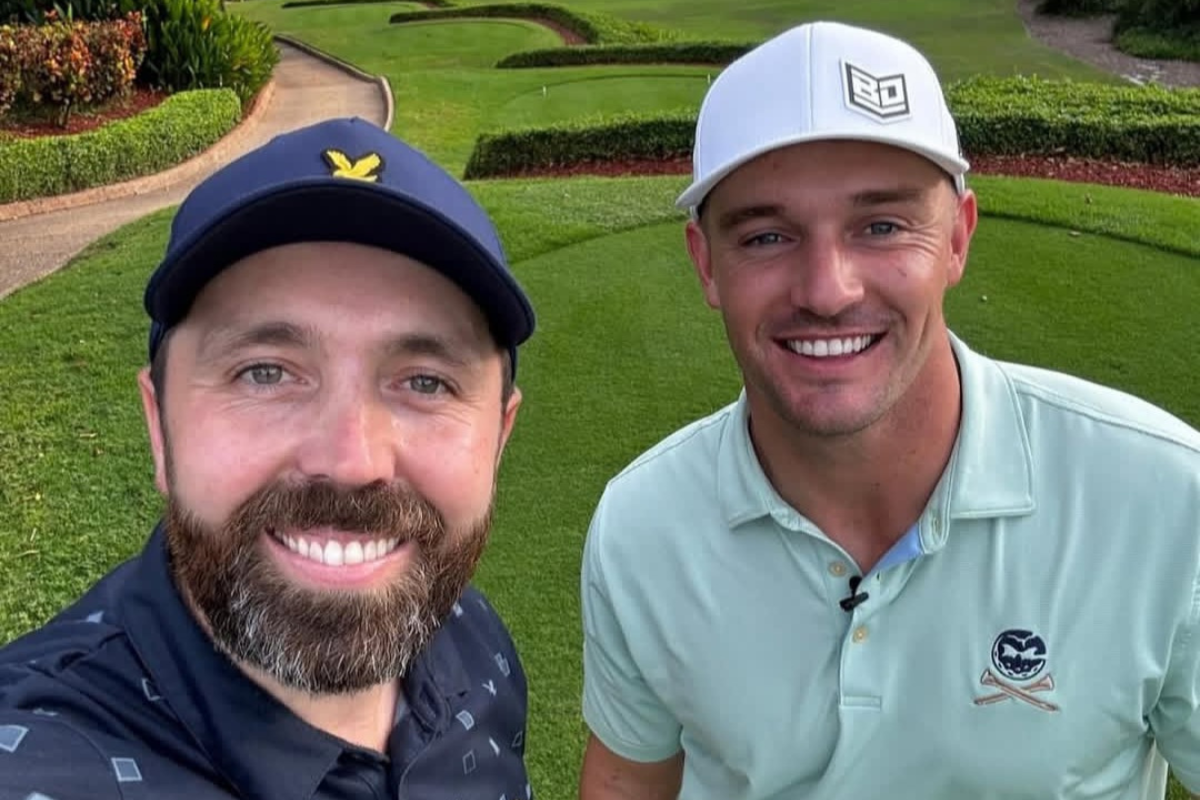
Imago
Credit: Rick Shiels, Instagram

Imago
Credit: Rick Shiels, Instagram
Let’s talk about the elephant in the room. While golf’s traditional gatekeepers worry about YouTube creators ‘dumbing down’ the sport, these same creators are quietly saving golf from irrelevance. When Bryson DeChambeau’s Trump collaboration video hit 15 million views in 24 hours – dwarfing the 2024 PGA Championship’s 5 million total TV viewers – we need to ask ourselves: Who’s protecting golf’s future?
Watch What’s Trending Now!
Golf used to be an exclusive, intimidating sport. Traditional broadcasts attracted older viewers with boring commentary. Meanwhile, course memberships remained expensive and unwelcoming. Consequently, younger generations avoided golf altogether. Then YouTube creators changed everything. Rick Shiels built nearly 3 million subscribers with honest equipment reviews. Similarly, Good Good Golf exploded to 1.83 million followers through entertaining challenges. Additionally, these creators made golf accessible and fun for everyone.
Now the results speak volumes. Golf participation reached 47.2 million Americans in 2024 – the highest since 2008. Moreover, 71% of that growth came from golfers under 50. Therefore, YouTube creators played a crucial role in reversing decades of demographic decline.
ADVERTISEMENT
Top Stories
Lee Trevino, 86, Leaves Golf World Hanging on Every Word at PNC: ‘I’ve Been Digging Worms’

Paige Spiranac Shares Her Mom’s Honest Views on Controversial Career Decisions

‘Losers’: PGA Tour Pro Blasts Fan Behavior After Viral NFL Arena Incident

LIV Golf Issues Statement as Pro Announces Shock Retirement After Getting Relegated

Korean PGA Tour Star Clears the Air on LIV Golf Rumors With Blunt Message

Rick Shiels and Good Good Golf lead YouTube’s cultural revolution
The demographic shift proves YouTube’s transformative power. Traditional PGA Tour broadcasts attract viewers who are on average over 60 years old. However, YouTube golf’s core audience skews dramatically younger, ranging from 18 to 32 years old. This represents a complete generational handoff in golf engagement.
Rick Shiels leads with 2.95 million subscribers and 908.4 million total views. His Korean driving iron video pulled 1.46 million views instantly. Meanwhile, Good Good Golf generates 10 million monthly views through their six-friend format. Furthermore, they treat golf like a social experience rather than an elite sport.
ADVERTISEMENT
Entertainment content consistently outperforms traditional instruction by massive margins. Bryson DeChambeau’s collaboration content surpasses most major championships in viewership. His YouTube channel experienced explosive growth of 1,300% in 2024, now boasting 2.03 million subscribers. Additionally, Good Good’s challenge videos regularly exceed one million views each.

Imago
Image Credits: vidIQ
Take Good Good’s viral “dating during a round” videos, where viewers see more flirting than fairway shots. Similarly, Bob Does Sports creates eating challenges that use golf courses as backdrops for food entertainment. Grant Horvat’s trick shot collaborations prioritize spectacle over instruction. Critics argue these barely qualify as golf content. Nevertheless, these “non-golf” videos consistently convert non-golfers into course visitors.
ADVERTISEMENT
This content-creation debate extends to tour professionals themselves. Xander Schauffele recently questioned the seriousness of creating a YouTube golf channel, asking, “Is that like a serious question?“ when pressed about starting his own channel. However, tour pros who create content aren’t seeing performance declines. DeChambeau captured the 2024 U.S. Open while building his digital empire. Therefore, content creation and competitive excellence coexist successfully.
The kids tell the real story about YouTube’s transformative impact. Junior golf participation reached 3.7 million in 2024 – the highest since 2006. Walk any driving range today and you’ll see young families practicing together. Many cite YouTube creators as their introduction to the sport—parents who never considered golf suddenly book lessons after watching creator content with their children.
ADVERTISEMENT
Women now comprise 28% of all golfers – the highest percentage ever recorded. Additionally, the 18-34 age group represents golf’s largest segment at 6.3 million players. This completely reverses traditional participation patterns, where young adults avoided golf.
YouTube golf creators drive economic transformation
Beyond cultural impact, creators transformed golf’s economic landscape. Golf equipment sales surged 10% in 2022, driven by endorsements from influencers. Consequently, major manufacturers like Callaway and TaylorMade now partner directly with creators rather than rely on traditional advertising.
ADVERTISEMENT
Good Good Golf raised $45 million in investment funding while top creators earn $5,500-$9,500 monthly from ads alone. Meanwhile, golf tourism projections reach $41.8 billion by 2030, with creators driving destination selection. The PGA Tour’s Creator Classic attracted 2.7 million YouTube views – their most-watched content.
This transformation reshapes golf culture itself. Sure, traditionalists cringe when creators skip proper attire or play music during rounds. Nevertheless, these approaches attract demographics that country clubs failed to reach for decades. Junior golf participation reached 3.7 million in 2024 – the highest since 2006. Additionally, women now comprise 28% of all golfers, the highest percentage ever recorded. Families plan golf vacations after watching travel vlogs, while children beg parents for lessons after seeing creators having fun.
What do you think – are YouTube creators saving golf or changing it beyond recognition? The participation numbers suggest that those might be the same thing.
ADVERTISEMENT
ADVERTISEMENT
ADVERTISEMENT
ADVERTISEMENT

